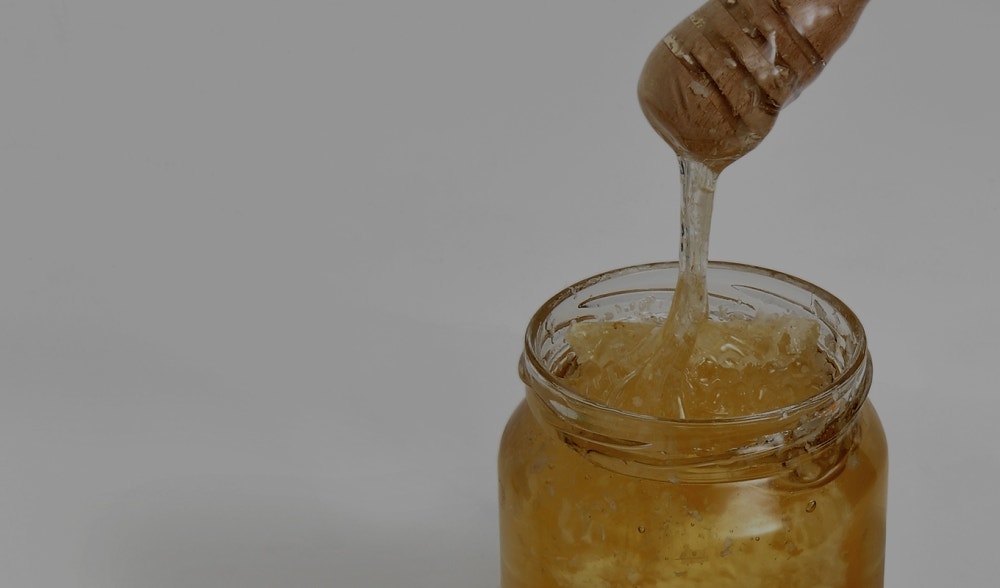Royal jelly is one of the traditional natural remedies preferred by entire generations. Why is it loved so much? Let's have a closer look!
First of all, this very special substance secreted by nurse bees is famous as an exceptional natural tonic, a restorative capable of fortifying children, adults, elderly people and, being completely safe, it is also appreciated by pregnant and breastfeeding women.
What exactly is royal jelly?

Considered the most valuable product generated by bees, royal jelly appears as a white, milky and viscous substance, with a rather sour and sugary taste, whose biological action derives from the dense concentration of health-boosting nutrients.
The name royal jelly derives from its function as the food reserved for the queen bee and young queen larvae during their first three days of life. Thanks to fresh royal jelly, a future bee larva grows at an extraordinary pace and lives much longer than other bees, reaching an age of 3-4 years.
When bees are about to raise a new queen, they build special cells (royal cells), at the bottom of which they store food destined for the "super" nutrition of larvae assigned to those cells. This is where the beekeeper steps in to take these cells and, sacrificing the future queens, extracts the tiny batches of royal jelly rich in micronutrients. Royal jelly is composed of:
- Water (65%),
- Proteins (12%),
- Lipids (5-23%) including phospholipids, glycerides, waxes and essential fatty acids,
- Sugars (9-16%),
- Vitamins (A, B complex, P and H),
- Mineral salts (iron, calcium, phosphorus, magnesium, zinc, copper, folic and pantothenic acids),
- Enzymes, which have interesting nourishing and restorative properties.
Although these benefits may vary in concentration, the composition of royal jelly remains relatively constant, regardless of the colony or breed of bees.
Royal jelly: the benefits

The most precious component is 1ìa fat with an antibacterial action present in fresh royal jelly, which reaches its maximum concentration when processed in the pharyngeal glands of nurse bees; its concentration decreases as the product ages. This active substance makes royal jelly an excellent natural antibiotic adjuvant characterized by antiviral and antibacterial properties against various strains that cause fever, cough, and cold.
Furthermore, being a source of B-complex vitamins, it has an immunomodulating action that can boost the immune system and modulate the production of antibodies, thus aiding the prevention of colds and other types of infection.
Traditional home-remedies have always included royal jelly as a classic natural tonic and restorative for both children and adults who may be feeling run-down for any reason, thanks to its adaptogenic properties capable of boosting physical and mental performance, enhancing memory and combating fatigue.
Why give royal jelly to children

Widely used in pediatrics as a classic tonic for growing children, royal jelly also boasts other beneficial properties for our little ones:
- It stimulates appetite
- It boosts metabolism
- It aids the assimilation of food
- It improves overall body tone
Royal jelly can be taken fresh or administered as a royal jelly food supplement, where it is often synergically combined with other useful vitamins and micronutrients that mask the original sour taste with a little sugar or honey, making it more agreeable to children.
When do you take royal jelly?
Royal jelly is particularly recommended:
- during brief or extended periods of psychophysical fatigue
- before and during the change of season
- during convalescence
- in moments of particular tiredness and difficulty concentrating, such as before exams or special events
- for states of anemia, malnutrition, and anorexia, as a mineralizing agent
- for scalp health.
Indications differ regarding methods and dosage; you should consult your doctor, pediatrician or nutritionist. Some recommend taking 250mg per day and others increase the dose up to 1g.
Generally speaking, royal jelly should be taken each season change and the typical recommended doses are 500 mg for children and 1 gram for adults, for at least 30 days. It should be taken in the morning on an empty stomach. If taken in its pure form and if possible, it should be dissolved under the tongue so that it is absorbed through the sublingual glands, thus avoiding the action of gastric juices.
It is available as a freeze-dried royal jelly supplement or in liquid form in vials, but it can also be taken pure, with honey or diluted in a little sweetened water. The important thing is to ensure that the raw substance is of high quality.
Side effects
Although it is a completely natural and non-toxic substance, it may induce adverse side effects in terms of allergic reactions. In such cases, actual anaphylactic shocks can occur in more vulnerable individuals who are already allergic to honey and other bee products such as propolis.
References
- Olianna Gourli, Ten Royal benefits of royal jelly, Maggio 2018, Nutritionist Resource, https://www.nutritionist-resource.org.uk/memberarticles/ten-royal-benefits-of-royal-jelly
- Visweswara Rao Pasupuleti, Lakhsmi Sammugam, Nagesvari Ramesh, and Siew Hua Gan, Honey, Propolis, and Royal Jelly: A Comprehensive Review of Their Biological Actions and Health Benefitsm, Oxid Med Cell Longev. 2017; 2017: 1259510.
Published online 2017 Jul 26. doi: 10.1155/2017/1259510, https://www.ncbi.nlm.nih.gov/pmc/articles/PMC5549483/


Comments
Write a comment about the article